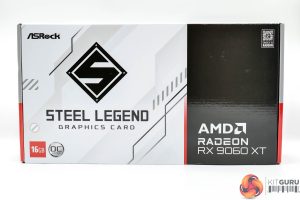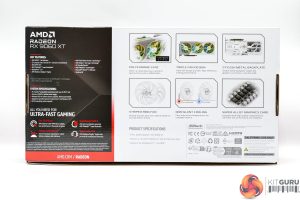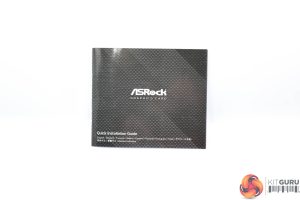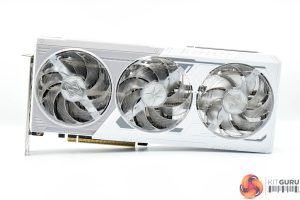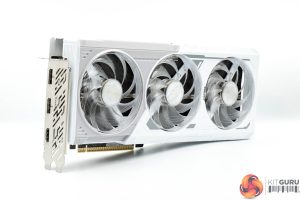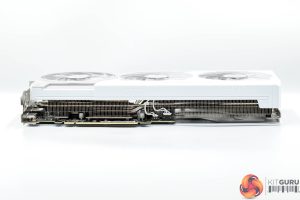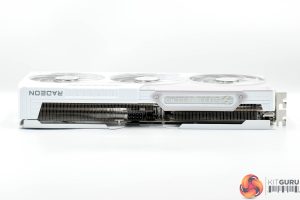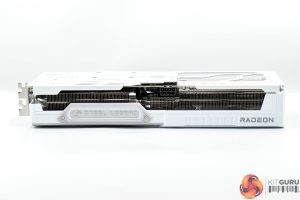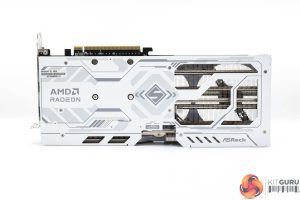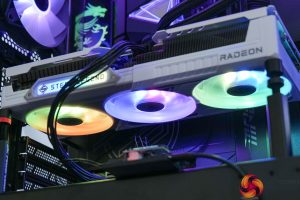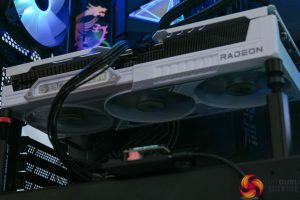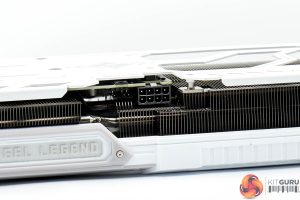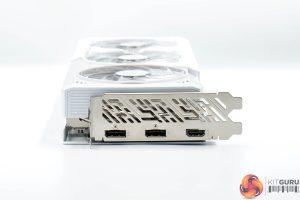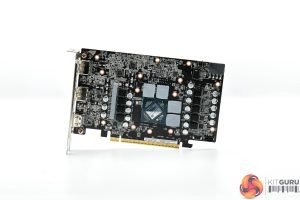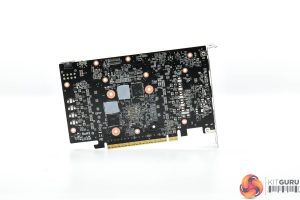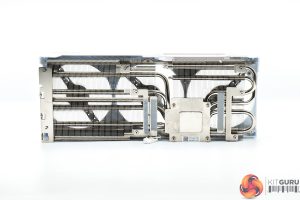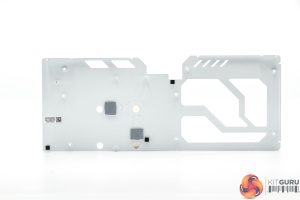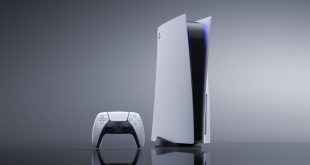Starting off with the ASRock RX 9060 XT Steel Legend 16GB, this ships in a white and black box, with a few features of the card and cooler design highlighted on the back.
The only included accessory is a quick-start guide.
If you've seen ASRock's Steel Legend components before – be it motherboard or graphics card – you will know what to expect from the design. It's sporting a white and grey shroud, an aesthetic I like quite a lot – it reminds me of the Star Wars Hoth rebels.
There's three fans, each measuring 90mm in diameter, and these feature transparent fan blades to help diffuse the RGB lighting, shown below.
In terms of dimensions, the Steel Legend measures 298 x 131 x 51mm, so it's hardly a small graphics card, but it's not an absolute monster either. It weighed in at 953g on my scales.
The front side is home to the Steel Legend logo which is illuminated by RGB LEDs.
The metal backplate continues the white and grey aesthetic from the shroud, while there's a large flow-through area too. You can also note a physical switch to toggle the ARGB lighting on or off, alongside an ARGB header to control the LEDs externally.
The lighting itself is nice and vibrant – the positioning of the LEDs around the fan hubs would make this a prime candidate for vertical mounting. But you can always toggle the switch to turn the lighting off completely if that's your preference.
Power is delivered by a single 8-pin connector, while there's two DisplayPort 2.1 and one HDMI 2.1 video outputs.
As for the PCB, ASRock has gone with a very similar design to the other cards on test today – we find seven phases for the GPU and two for the memory, with both GPU and memory VRMs controlled by separate Monolithic Power Systems MP2868A controllers. Monolithic MP87661 MOSFETs are used throughout.
We can also note that the 16GB 9060 XTs are utilising a clamshell design, with four memory modules on either side of the PCB.
ASRock's heatsink utilises a total of four heatpipes, with the GPU and memory contacting with a central baseplate, while the MOSFETs are cooled by secondary plates.
Thermal pads are positioned on the underside of the backplate, too, to provide some extra cooling capabilities.
 KitGuru KitGuru.net – Tech News | Hardware News | Hardware Reviews | IOS | Mobile | Gaming | Graphics Cards
KitGuru KitGuru.net – Tech News | Hardware News | Hardware Reviews | IOS | Mobile | Gaming | Graphics Cards


